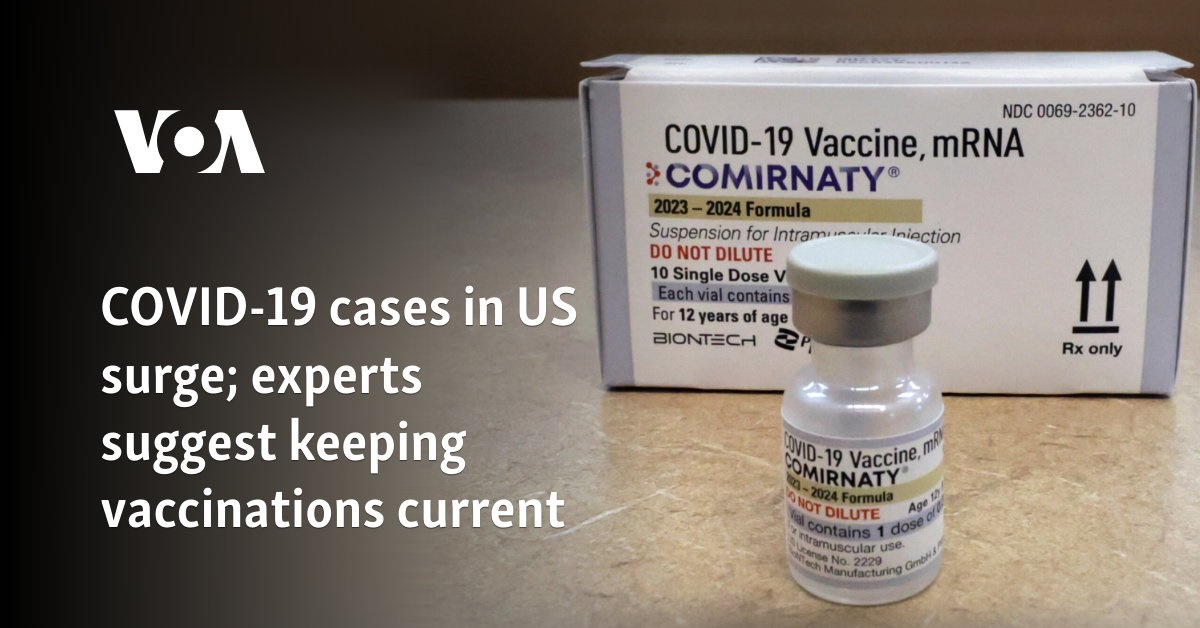
This article was originally published on VOA News - Science. You can read the original article HERE

COVID-19 hasn't gone away, and data from the Centers for Disease Control and Prevention suggests it's on the upswing around the country.
"We've seen these summer increases every summer that COVID-19 has been with us," said Dr. Amesh Adalja, a Johns Hopkins University infectious disease physician. "What's different about these cases this summer vs. prior summers is that they don't translate into hospitals in crisis."
Adalja said factors in the seasonal increase could be increased travel, people staying indoors to avoid summer heat, and the virus' continued evolution — which could help it get around people's immunity.
Testing for COVID-19 is sporadic and the true number of cases isn't clear because many infections aren't reported. But one way to spot trends is to see what percentage of lab tests come back positive. By that metric, COVID-19 is surging, with nearly 15% of tests coming back positive vs. less than 1% for flu.
Nevertheless, doctors' offices aren't seeing an outsized share of people with symptoms of respiratory illness. The proportion of doctor visits for flu-like symptoms remains low.
And though COVID-19-related hospitalizations are rising, they remain below the levels seen in the winter — and far below peaks seen earlier in the pandemic.
The CDC also tries to monitor the spread of the coronavirus by looking for it in sewage and other wastewater at participating sites across the country.
The most recent wastewater data — from the beginning of August — shows the highest levels since January. Detections were highest in the West and South, and lowest in the Northeast. The agency labels the national wastewater viral activity level as "very high."
Experts say to treat the data with caution because it has limitations.
"You just know it means there's a lot of virus out there," said Jennifer Nuzzo, a Brown University pandemic researcher. "But you don't know how many people, how many infections that translates to."
Nevertheless, the wastewater data shows "there's a whole lot of COVID out there," she added.
Adalja suggested staying up to date on your vaccinations and that people at higher risk of a serious illness consider wearing masks in crowded indoor congregated areas.
If you do get sick, note that the CDC recommends staying away from other people until your symptoms are improving and you've been fever-free for 24 hours.
COVID-19 is now "basically part of the human condition," Adalja said. "It's unavoidable when you interact with humans."
This article was originally published by VOA News - Science. We only curate news from sources that align with the core values of our intended conservative audience. If you like the news you read here we encourage you to utilize the original sources for even more great news and opinions you can trust!










Comments